Patios are one of the outdoor living spaces that add the most value to your home. But before you can start setting up your furniture, water features, or fire pits, you need to learn how to tile outdoors first. Deciding on the right type of outdoor tile can be a daunting process if you don’t know what you should be looking for. That’s why we’ve put together a complete guide to choosing the best outdoor tile for you below.
Let’s get started!

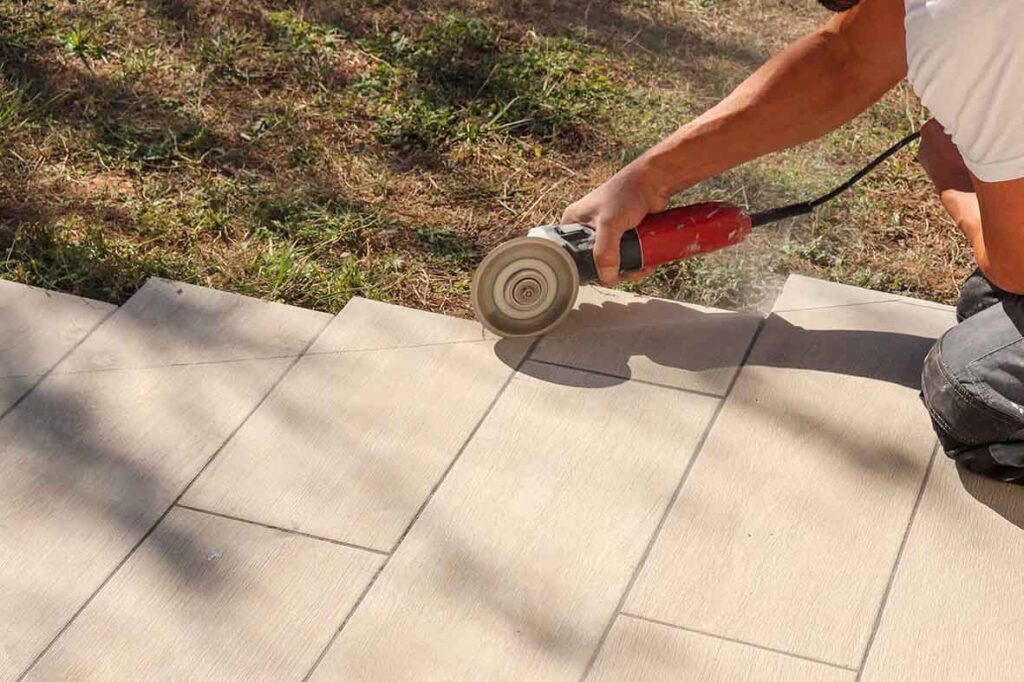
WHAT’S THE DIFFERENCE BETWEEN INDOOR TILE AND OUTDOOR TILE?
Indoor tile and outdoor tile differ from each other in two main ways: design and durability.
Here’s what we mean by that.
Outdoor tiles often have the appearance of stones, pavement, concrete, decking, or other outdoor elements. But on top of that, the surface of outdoor tile is more textured than indoor tile. This creates a slip-resistant surface that’ll give you, your pets, and your patio furniture traction.
Outdoor tile is also much more durable than indoor tile. It can withstand direct sunlight and harsh weather conditions without getting damaged.
So, before you start laying tile in your patio, make sure you have outdoor tile. Otherwise, your hard work won’t last very long.
TIPS FOR CHOOSING THE RIGHT OUTDOOR TILE FOR YOUR HOME
There are several outdoor tiles to choose from, so if you don’t know what to look for, the decision can seem overwhelming. That’s why we’ve put together a few tips that’ll help you narrow down the choices and pick the best outdoor tile for your home.
Before you start shopping, make sure you ask yourself these five questions.
1. WHAT’S YOUR BUDGET?
The first thing you should consider when buying outdoor tile is your budget. The amount you can afford will limit the selection you can choose from.
For example, if you can’t spend more than £12 per square foot of material, things like high-quality natural stone tile will be out of the question.
So, decide on a budget first. You’ll be more likely to remember and stick to your budget if you see it in writing.
Don’t let yourself get fooled by “cheap” prices. Spending £20 per square foot might not seem like much, but it can add up fast.
“A well-designed patio is one that offers lots of functionality for your favourite activities. Before you begin building or redesigning your space, sit down with a piece of paper, and write out how you want to use your patio. If you have a family that you share the space with, talk to them about outdoor activities they might be interested in doing at home if they had space. Do this early in the design or renovation phase. That way you can craft a space that really works with clear objectives in mind.”
Isabella Caprario in her article How to Create an Indoor/Outdoor Space That’s Fun and Functional.
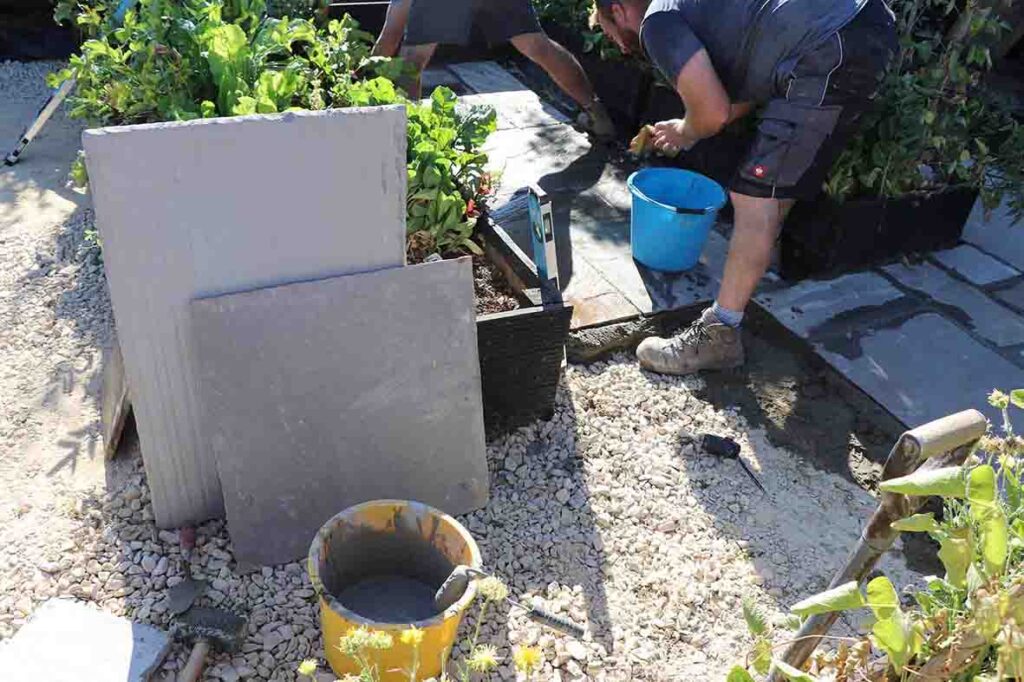
2. WHERE AND HOW WILL YOU USE THEM?
While all outdoor tiles can withstand the elements, they aren’t all built the same.
Some outdoor tiles are tougher than others. That means some outdoor tile is prone to scratches, cracks, and other damage. Make sure you get an outdoor tile that can last in your area.
You should also think about how you plan to use your tile. Do you plan to use it on a wall? Are you installing in on the ground?
The answer to this question might affect the type of tile you need.
Some tiles works better on walls. Others work better when you install it on the ground. Make sure you get the right type of outdoor tile your project.
3. WHAT’S THE WEATHER LIKE IN YOUR AREA?
Do you live in an area with mild weather conditions? Do you get snow in the winter? Rain in the spring? High heat in the summer?
You should always look for outdoor tile that can handle your specific weather requirements. A tile that can hold up to heat may not do well with snow or ice. If you get a lot of rain, your tile might need an extra grip on the surface.
Figure out what type of weather your area gets then base your tile search off that.
4. HOW MUCH LIGHT DO YOU GET?
Dark tile colours can make a shady area feel dank and gloomy. Similarly, light tile colours can make a sunny area feel washed out.
To get the best visual effect, always install light coloured tile in places that don’t get a lot of sun. If your patio gets a lot of direct sunlight, use dark tile instead.
5. WHAT IS THE CURRENT STYLE AND COLOUR OF YOUR HOME?
Don’t choose a tile style that’ll clash with the design of the rest of your home.
For example, rustic outdoor tile will look odd and out of place with a sleek, modern home. Find something that’ll complement your style rather than detract from it.
You should also think about the colour.
Do you want your outdoor tile to match the colour of your home? If not, make sure you pick a colour that will blend in with the rest of your aesthetics.

POPULAR TYPES OF OUTDOOR TILE
Now that you have some tips that’ll help you pick the best outdoor tile for your home, let’s take a look at some of your options.
Here’s a quick list of some of the most popular outdoor tile choices.
PORCELAIN TILE
Porcelain tile is an increasingly popular choice, for interior as well as exterior use.
For outdoor tile, porcelain usually comes in 20mm thick tiles or thicker. Because of this they are dense and strong, which makes it a good choice for outdoor use. But make sure you find porcelain tile rated for the outdoors.
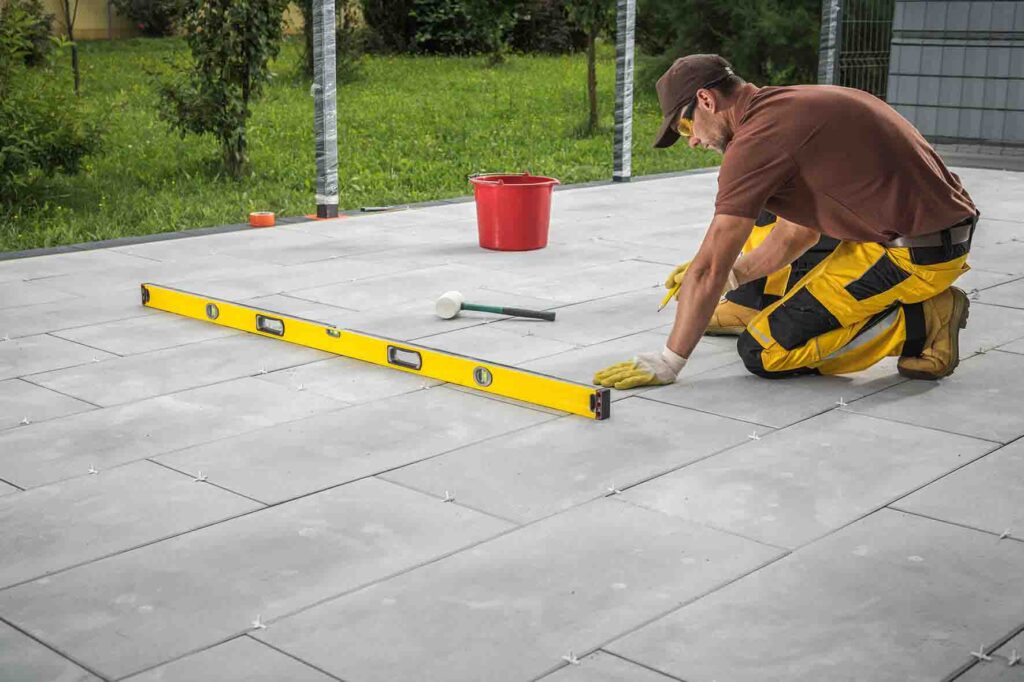
Indoor porcelain tile is typically thinner, 15mm thick or less, and often has a glossy surface that will become very slippery if it gets wet. Instead, you’ll want your porcelain to have a textured surface.
Another reason why outdoor porcelain tile has become so popular in the last few years is because it can come in various finishes. You can stick with the stone look, or venture for something that mimics wood, or even concrete.
The versatility of these outdoor tiles is why they are high up on our list.
CERAMIC OUTDOOR TILE
Ceramic can handle mild weather conditions and light outdoor use, but it isn’t as strong as other types of outdoor tile. Because of this, you should only pick ceramic for covered patios or patios that don’t see a lot of extreme weather changes.
And remember, not all ceramic tile is made the same.
Some types are weaker or stronger than others, so make sure you pick a durable option. Depending on what you buy, ceramic can be an affordable choice, but there is a lot of flexibility in the price range.
As with porcelain, ensure that your ceramic tiles are rated for outdoor applications.
QUARRY TILE
Quarry tiles are strong, designed specifically to be used outside so you can expect them to hold up against the elements. However, quarry tile doesn’t hold up well to freezing and ice. If you live in an area that gets freezing winters or sees a lot of snow and ice year-round you might want to select a different option for your outdoor tile.
Rain, on the other hand, isn’t a problem. Quarry tile is water resistant, and they don’t become slippery when wet.
But be careful with other liquids. This type of tile can stain easily.
In warm climates, quarry tile can be one of the best outdoor tile options for your home. The downside is there are not many colours or styles to choose from.
SLATE TILE
Slate is a type of natural stone (which we will see more of on this list).
This tile is durable and strong, and it also has a natural surface texture. This means it will be slip-resistant without you having to do anything else to it.
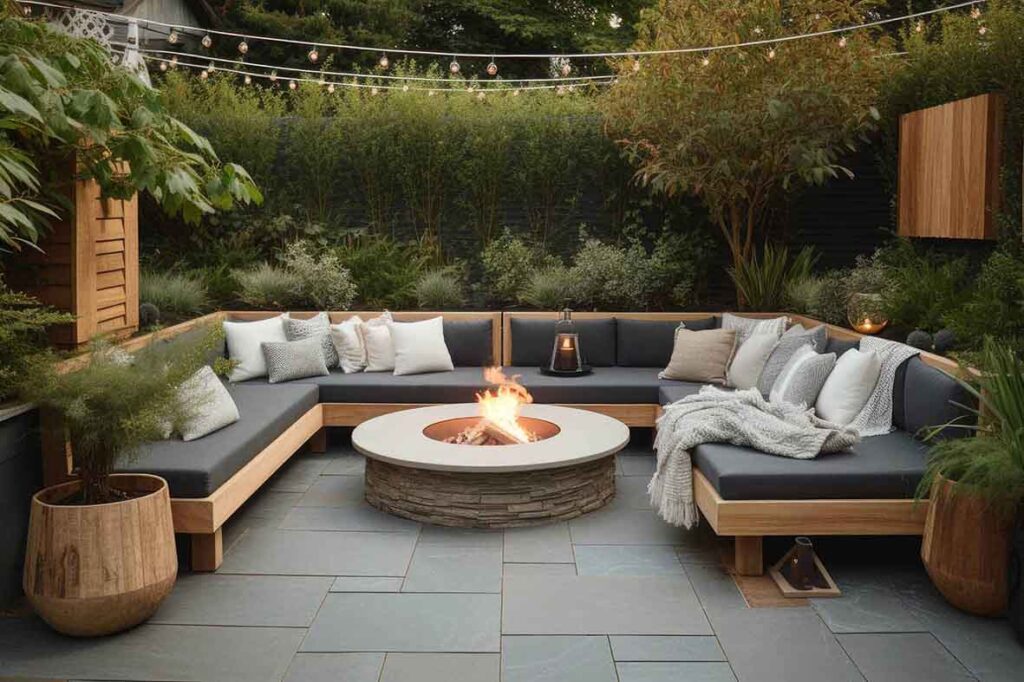
You can find slate in a variety of colours, including dark colours like black and grey and brighter colours like green or orange.
GRANITE TILE
Granite, another natural stone, makes beautiful indoor countertops, but it doesn’t hold up as well outside.
Apart from being slippery, granite is also a porous material.
In other words, it will absorb moisture, causing stains and other damage, if you don’t seal it every few years.
CONCRETE OUTDOOR TILE
Concrete tile gives you a cheaper way to get a “natural stone” outdoor floor. Manufacturers shape the concrete into the right texture and colour them to make them look like natural stone.
This gives your home a high-end look for a fraction of the cost.
Concrete tile is durable and can withstand harsh weather and heavy foot traffic. However, you will have to reseal it every few years.
TRAVERTINE TILE
Travertine is a natural stone that creates beautifully textured and coloured tile.
This tile is hard, but it also has a pitted surface that can gather dirt over time.
You can avoid this problem by polishing the surface so it’s smooth. But if you choose to do this, it will become slippery when wet.
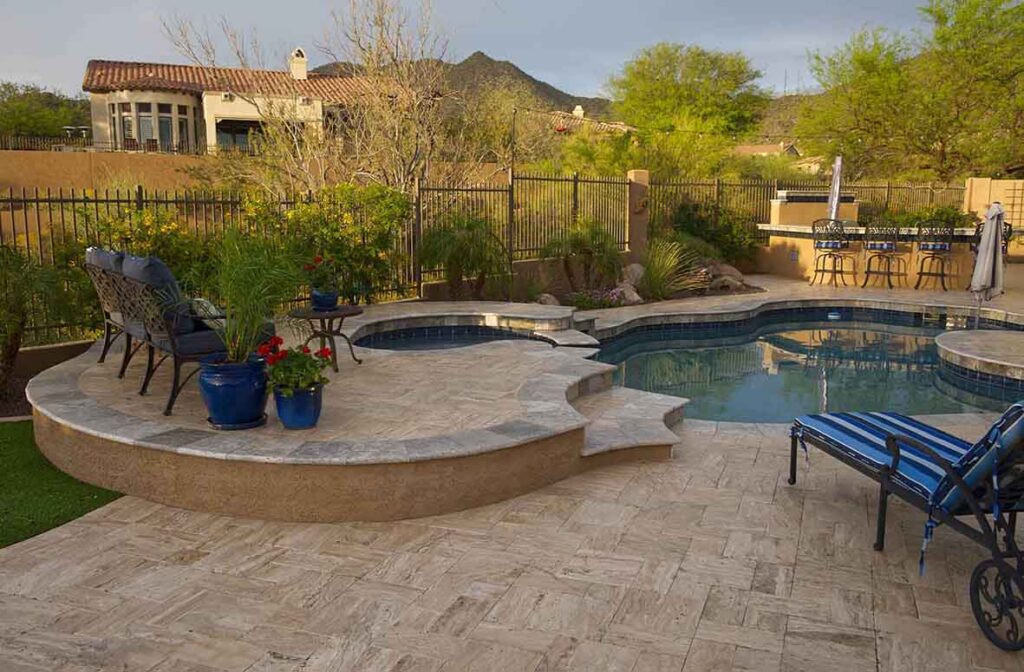
Because of its natural texture this type of outdoor tile is popular around swimming pools.
SOAPSTONE TILE
Soapstone is also a natural stone, but it has a smooth and non-porous quality. This makes it resistant to stains and other types of water damage.
It can also withstand high levels of heat and freezing temperatures. Because of this, soapstone is a good option for almost any climate. If you’re looking for something to surround your pool, you might want to consider soapstone.
LIMESTONE TILE
Limestone is a soft stone, meaning it can scratch and chip easily.
You also have to seal this type of tile often to prevent water damage.
Don’t install limestone in your patio unless you live in a dry, mild environment.
SANDSTONE TILE
While sandstone has a beautiful texture, it is even more fragile than limestone. Since this tile is made from layers of sand compressed together over time, it is soft and prone to scratches, chips, and cracks.
Water can also cause a lot of problems for sandstone. But if you live in a dry area and seal it often, this tile can make a beautiful addition to your outdoor space.
CHOOSING THE BEST OUTDOOR TILE FOR YOUR HOME
Now that you know what outdoor tile suites your home the best, it’s time to start the installation process. But before you can get to work, you need the right tools.
Not sure where to find them? Make sure you click here to find the tiling tools you can’t work without.


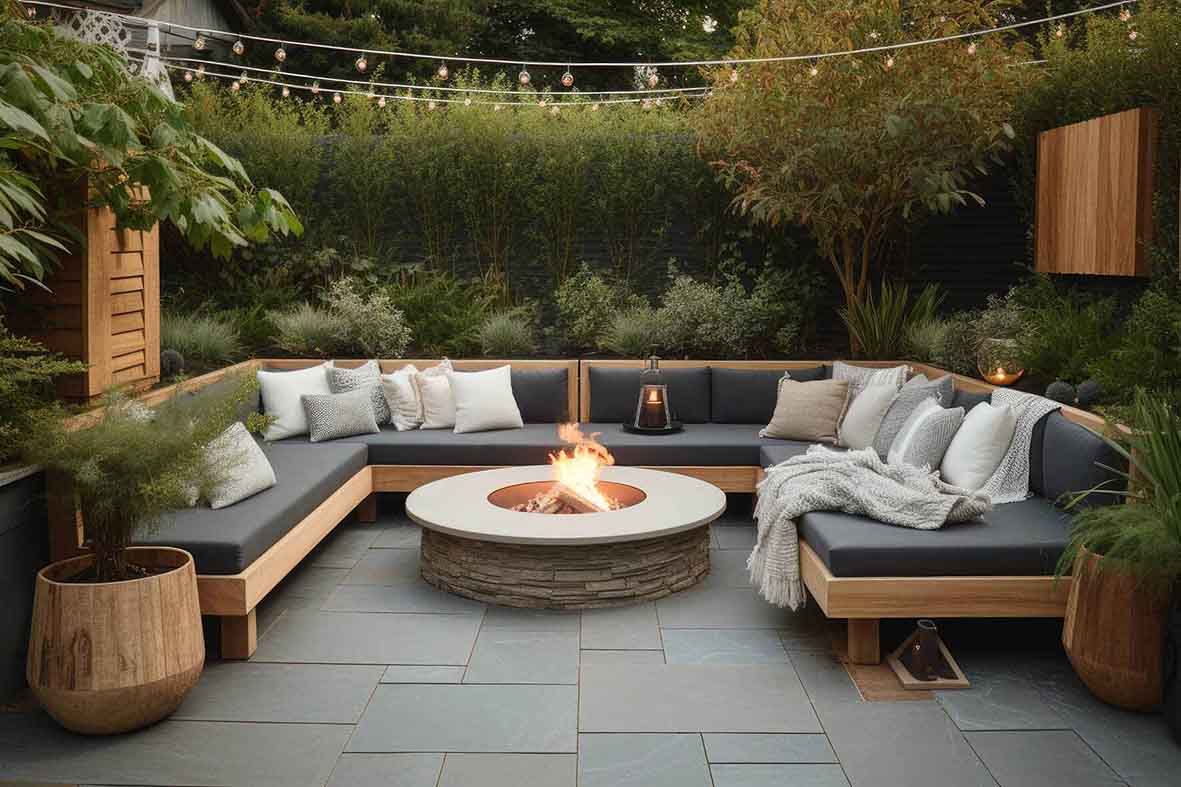
Post a comment